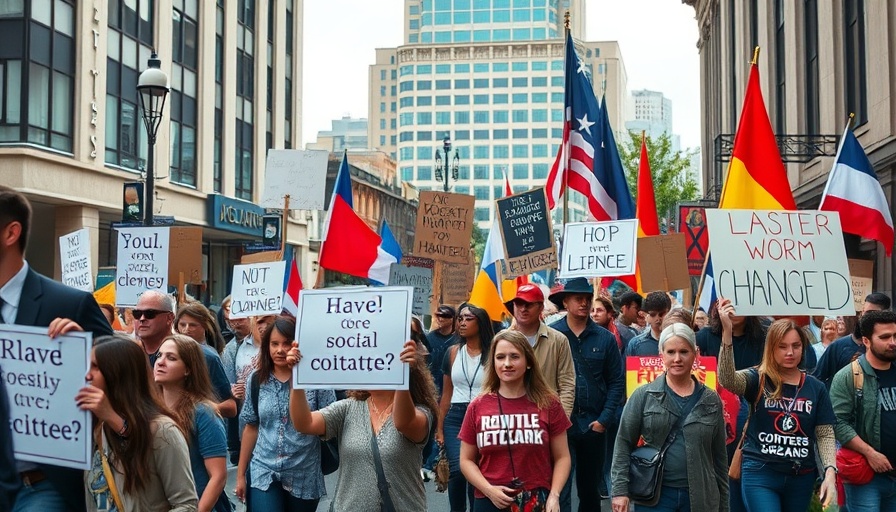
The Unseen Reality of Portland’s Protests
In Portland, Oregon, a tapestry of turmoil weaves together threads of anger and hope as protests rage on. The anti-fascist movement, commonly abbreviated as Antifa, has captivated national media and political discourse. President Trump and his administration describe the city as a war zone filled with ‘violent thugs,’ but a closer look reveals a different story.
Decoding the Media Narrative
Over the past several months, coverage of Portland has been marked by vivid stark imagery of conflict—images that resonate powerfully in the public's mind. As protests against U.S. Immigration and Customs Enforcement (ICE) continued, independent reporters like Nick Shirley highlighted a burgeoning concern: Are these protests being manipulated into tools of political narratives? Reports indicate that Antifa affiliates have been misrepresented as a singular, dangerous entity, while in reality, they embody a broad coalition of decentralized groups standing against white supremacy.
A City Divided
Portland’s streets tell two conflicting tales. On one hand, videos of fierce protests flash across screens; on the other, the reality on the ground suggests a city largely functioning beneath the fervor. Many Portland residents, invigorated by a history of activism, protest with humor and creativity—dressing in costumes and employing satire to combat incendiary rhetoric from national leaders. Such grassroots efforts counter the image of chaos that Trump paints, illustrated humorously by activists like Seth Todd, who sport frog costumes in protest.
The Psychological Toll of Imagery
This battle over imagery reflects deeper societal fears—fears that not only shape political movements but also influence public perception across the country. The amygdala, the brain’s fear center, is continuously activated by sensational imagery, creating an environment steeped in anxiety and misunderstanding. In such a volatile climate, the need to discern fact from fiction has never been greater. How do we criticize the politicization of these protests without losing sight of the genuine human struggles they represent?
What Lies Ahead for Portland?
As Portland turns a page towards the uncertain remnants of civil protests, the broader implications hint at a moral quandary for both supporters of ICE enforcement and anti-fascist advocates. The challenge for polarized citizens resides not merely in voicing these differences but in seeking common ground—understanding that the protests are as much about human rights as they are about immigration policy.
The narrative may vary based on whom you ask, but in an era of distrust and division, one element remains universal: the call for compassionate dialogue amidst fierce disagreement. Engaging with differing perspectives can pave the way for healing the rift in this deeply divided community.
Take Action and Stay Informed
As cities like Portland navigate through these tumultuous times, vigilance in consuming media and understanding the motives behind the messages being conveyed is critical. Educate yourself on the intricacies of this issue—join forums, discuss with peers, and keep an eye on the local narratives to gain a holistic view.
In these transformative times, becoming active participants in our communities means challenging the narratives we are fed and seeking the truth beneath layers of carefully curated imagery. Portland's story continues to unfold, and so should our engagement with it.
 Add Row
Add Row  Add
Add 




Write A Comment